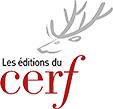
Histoire, utopie, mystique
Collection Initiations bibliques
256 pages - oct. 2003
36,30€
La Bible est-elle le livre puissant mais à l'écriture naïve que supposent tant de commentaires, un message sublime mais simple adressé à des simples ; ou faut-il suspendre la révélation tantôt à une archéologie de plus en plus serrée, tantôt au folklore oriental, tantôt à des psychologies de profondeurs, qui iront détecter derrière l'inconscience des rédacteurs les merveilles que ces enquêtes y projette au risque de fabriquer parfois et la clef et la serrure ? Cet essai explore une voie proprement littéraire, qui ne cherche donc le sens ni au-delà ni en deçà de la texture. L'auteur montre que pour inculquer une prophétie - qui remettait en cause l'orgueil de la Cour et du nationalisme - à partir de trois repères vitaux pour Israël, le Chabbat, le Cadastre et le Temple, les rédacteurs ultimes ont joué de techniques telles que l'énigme. l'étirement ou le resserrement, la mise en page, une composition patiente et étudiée, une stratégie visant la mémoire du lecteur. Une première partie, illustrée d'exemples simples, montre l'usage des débuts d'unités littéraires, de leurs milieux et de leurs conclusions. La seconde partie propose une lecture de trois textes concernant David, Jérémie et la fin de l'évangile selon Jean.
--
Is the Bible really the simply-written but powerful book some commentaries suppose? A sublime but simple message intended for simple people? Or should we see the setting for the revelation as a dense archaeology - or eastern folklore? Or should we heed the explanation proffered by a deep psychological analysis of the writers of those marvels – a technique that sometimes yields not only the key but the door as well. This essay explores a purely literary path, which never seeks meaning beyond or beneath the texture of the writing. The final authors use literary devices such as enigma, page lay-out, patient and careful composition, strategy aiming to impress the reader’s memory. Part One, illustrated with simple examples, demonstrates the use of the beginnings of literary units, their developments and their conclusions. Part Two proposes a reading of three texts about David, Jeremy and the end of the Gospel of Saint John.
--
Is the Bible really the simply-written but powerful book some commentaries suppose? A sublime but simple message intended for simple people? Or should we see the setting for the revelation as a dense archaeology - or eastern folklore? Or should we heed the explanation proffered by a deep psychological analysis of the writers of those marvels – a technique that sometimes yields not only the key but the door as well. This essay explores a purely literary path, which never seeks meaning beyond or beneath the texture of the writing. The final authors use literary devices such as enigma, page lay-out, patient and careful composition, strategy aiming to impress the reader’s memory. Part One, illustrated with simple examples, demonstrates the use of the beginnings of literary units, their developments and their conclusions. Part Two proposes a reading of three texts about David, Jeremy and the end of the Gospel of Saint John.
- Dimensions : 135x215x17
- ISBN : 9782204072939
- Poids : 336 grammes
DU MÊME AUTEUR
> VOIR TOUS LES LIVRES DE l'AUTEUR
DANS LA CATÉGORIE INTRODUCTION À LA BIBLE
Les plantes de la Bible et leur symbolique (nouvelle édition)
de Christophe Boureux
112 pages - nov. 2014










